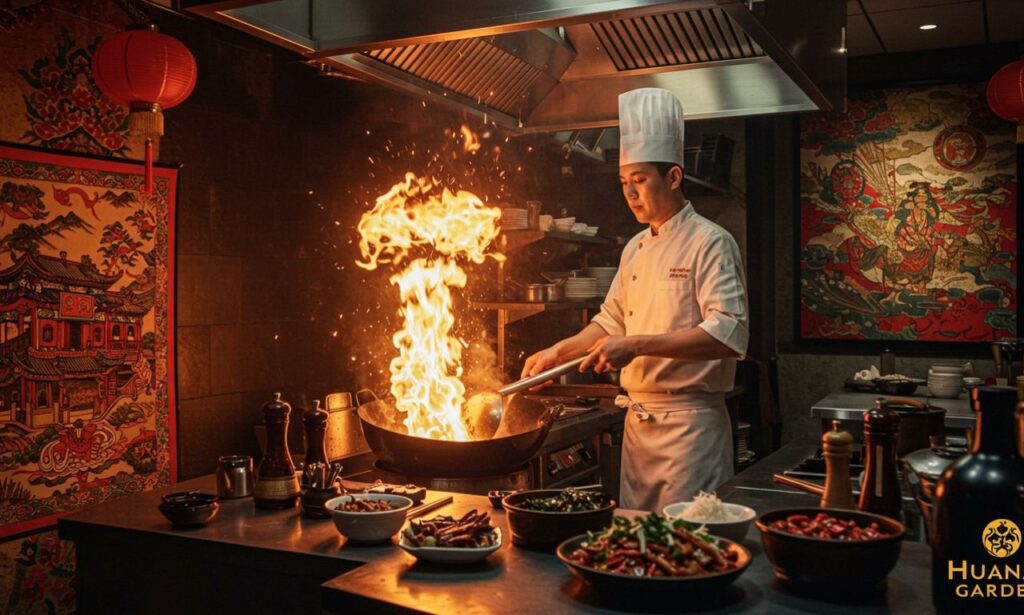Hunan Garden is more than just a name—it’s a flavorful tribute to one of China’s most beloved culinary regions. Known for its bold flavors, rich spices, and deep cultural roots, Hunan cuisine represents a fiery and flavorful experience unlike any other. Whether you’re visiting a local restaurant named “Hunan Garden” or exploring the heritage behind the cuisine itself, the journey promises to be unforgettable.
Hunan Garden and the Roots of Regional Cuisine
Originating from China’s Hunan Province, Hunan cuisine—also known as Xiang cuisine—is one of the Eight Great Traditions of Chinese cooking. Often confused with Sichuan food due to its spice level, Hunan cuisine is distinct in both preparation and flavor profiles.
Hunan Garden, as a restaurant or concept, captures this essence by highlighting the regional character of dishes: fresh ingredients, heavy use of chili peppers, garlic, and shallots, and an emphasis on color and aroma. The region’s humid climate also influences the cuisine’s use of preserved and smoked ingredients, allowing for complex layers of taste.
Signature Dishes at Hunan Garden
When visiting a restaurant called Hunan Garden, you’ll typically find a menu featuring many of Hunan cuisine’s classic dishes. Some of the most popular offerings include:
-
Mao’s Braised Pork (Mao Shi Hong Shao Rou): Named after Chairman Mao Zedong, a native of Hunan, this dish features rich, caramelized pork belly slowly braised in soy sauce and sugar.
-
Dry-Fried Green Beans: A stir-fried dish combining crispy green beans with minced pork, chili, and garlic.
-
Smoked Pork with Dried Long Beans: A rustic dish that highlights the province’s love for preserved meats and bold seasonings.
-
Steamed Fish Head with Diced Hot Red Peppers (Duo Jiao Yu Tou): A spicy and aromatic dish made with pickled peppers and tender fish.
Each dish in Garden reflects a deep connection to local agriculture, culture, and culinary craftsmanship.
The Flavor Profile of Hunan Garden Cuisine
What sets Hunan cuisine apart, and what Hunan Garden strives to replicate, is the multi-dimensional spice. Unlike the numbing spice of Sichuan peppercorns, Hunan dishes are known for pure, sharp heat from fresh chili peppers.
Alongside heat, expect to experience:
-
Sourness from fermented vegetables
-
Rich umami from smoked or preserved ingredients
-
Fresh brightness due to quick stir-frying
-
Balanced sweetness in some braised dishes
Hunan Garden menus often reflect this balance, making each bite an exploration of taste and texture.
Cultural Significance of Hunan Garden Dishes
Food in Hunan is not merely nourishment—it’s an expression of heritage, community, and celebration. Hunan Garden often becomes a gathering place where these values are shared over meals.
In Hunanese tradition, food is central to hospitality. Bold flavors represent the host’s sincerity and generosity. As such, restaurants named Garden frequently embody a warm and welcoming environment.
Festive dishes served at Garden during holidays or cultural events may include spicy duck, special rice cakes, and seasonal vegetables with preserved meats—each with cultural symbolism and significance.
Hunan Garden in the Modern Dining Scene
Across the globe, the name “Hunan Garden” has been adopted by countless Chinese restaurants aiming to represent the province’s cuisine. Whether in New York, London, or Sydney, the popularity of these restaurants underscores the global appeal of Hunan food.
Modern Garden establishments often blend traditional recipes with contemporary presentations, appealing to new generations of food lovers. Many incorporate sustainable ingredients, offer vegetarian variations of meat-heavy classics, and include fusion elements without compromising authenticity.
Some Garden restaurants even collaborate with culinary schools or host chef-led tasting menus to educate diners about Hunan cuisine’s depth and history.
Regional Variations Within Hunan Cuisine
While the term “Hunan Garden” evokes a unified culinary identity, Hunan itself has diverse sub-regions, each with its own twist on flavors. These include:
-
Western Hunan: Known for smoked and cured meats.
-
Southern Hunan: Features extra spice and sour flavors.
-
Northern Hunan: More refined dishes with less oil and spice.
Restaurants using the Garden name may focus on one region or offer a curated blend, ensuring a wide appeal and a more complete representation of Hunan’s culinary diversity.
How Hunan Garden Differs from Other Chinese Cuisine Styles
Hunan Garden offers a distinct experience when compared to Cantonese or Sichuan establishments. While Cantonese cuisine is lighter and sweeter, and Sichuan dishes often feature the numbing heat of peppercorns, Hunan cuisine is all about direct, punchy spice, aromatic sauces, and a variety of textures.
A diner who prefers clarity of flavor over the complex layering of Sichuan heat may find Garden more appealing. The heavy use of chilies and freshness of ingredients also cater well to those who enjoy spice without an overpowering sensation.
Customer Experience and Ambience in Garden Restaurants
Apart from the food, the setting in Garden restaurants often reflects traditional Chinese aesthetics. Expect warm wooden tones, red lanterns, calligraphy, and cultural motifs that evoke a connection to the region.
Service is typically fast and attentive, with staff knowledgeable about the dishes and ingredients. Many Hunan Garden locations pride themselves on educating guests, especially first-time diners, about the cultural significance of their meals.
Menus may include spice level indicators and pairing suggestions, helping guests tailor their experience to their preferences.
Tips for First-Time Diners at Garden
If you’re new to Hunan cuisine, here are a few tips to enhance your experience at Hunan Garden:
-
Start mild: While the cuisine is known for heat, not every dish is fiery. Ask staff for milder options or request spice levels.
-
Try something preserved or smoked: These are core elements of Hunan flavors.
-
Balance the heat: Order a refreshing side, like cucumber salad or pickled vegetables, to offset spicier mains.
-
Explore rice and noodle options: Many Hunan Garden locations offer regional-style noodles and rice dishes that are deeply satisfying.
The Growing Popularity of Hunan Garden Globally
The name “Hunan Garden” continues to gain traction globally due to increased interest in regional Chinese cuisines. As food lovers move beyond generalized Chinese takeout, there’s a growing appetite for authenticity and regional distinction.
Social media has played a key role in this shift. Beautifully plated spicy dishes, chef videos explaining cultural context, and behind-the-scenes footage from Garden kitchens help fuel interest.
Furthermore, celebrity chefs and food travel shows have helped spotlight Hunan cuisine, increasing traffic to restaurants carrying the Garden name.
Final Thoughts
Whether you’re enjoying a family meal or embarking on a culinary adventure, Hunan Garden offers a unique gateway to one of China’s most vibrant food traditions. Its bold flavors, rich history, and deep-rooted cultural significance make it more than just a place to eat—it’s a journey through one of the world’s most dynamic culinary landscapes.
From the smoky depths of preserved pork to the mouth-tingling spice of pickled chili fish, every dish tells a story. With its balance of heat, color, and culture, Hunan Garden earns its place as a must-visit destination for lovers of authentic Chinese cuisine.






